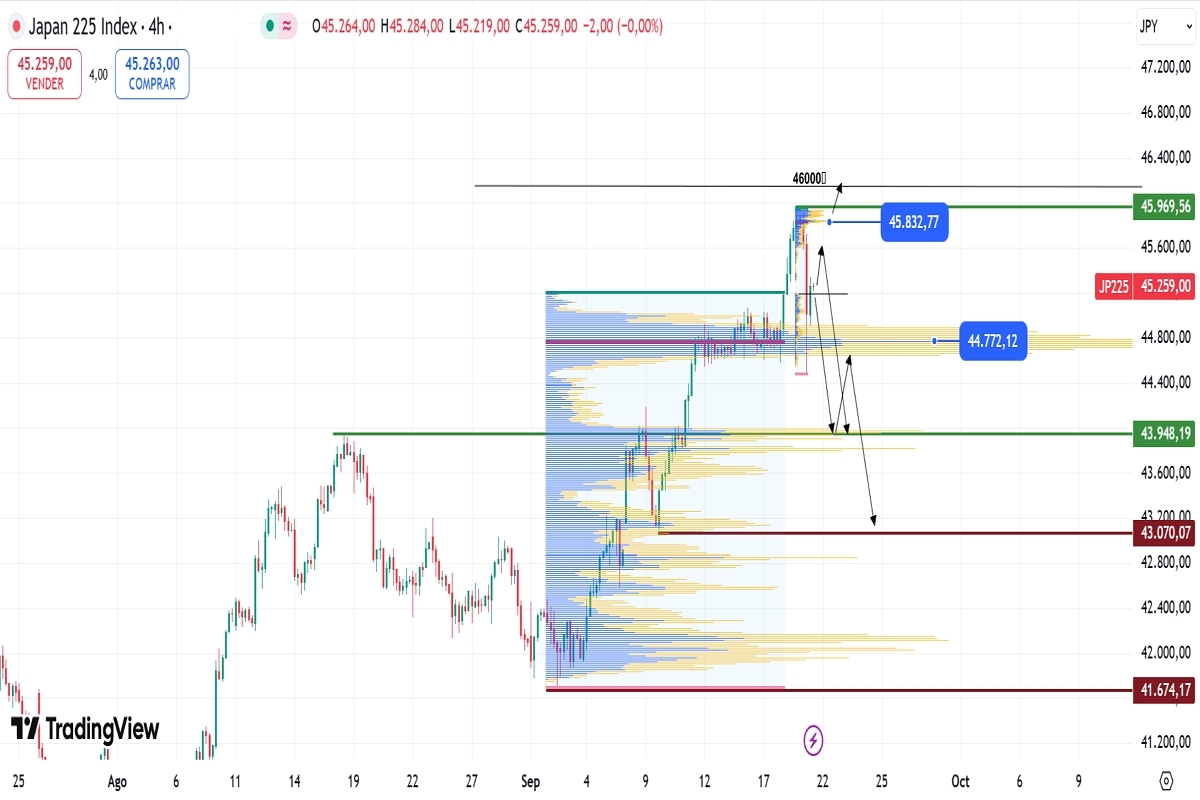Fundamental Analysis
The Bank of Japan (BOJ) announced today
that it will gradually begin to sell ETFs and REITs, marking the start of monetary policy normalisation after more than a decade of massive stimulus. This measure reduces the artificial demand for stocks and has a direct impact on the Nikkei 225 index, which reacted with a drop of around 1.7%.
Why it affects the Nikkei 225
The BOJ’s asset sales reduce the liquidity that has sustained Japanese stock prices for years. Lower demand means greater downward pressure, increasing volatility and generating wider swings in the market. Investors are closely watching how this strategy will affect historical highs and key levels of the Nikkei.
Why the yen strengthens
The JPY rose against the dollar after the announcement. The reason is that markets anticipate a gradual tightening of monetary policy, making the yen more attractive as a safe-haven currency. The combination of asset sales and expectations of higher rates is boosting demand for the Japanese currency.
Internal division at the BOJ
Governor Kazuo Ueda defended keeping the rate at 0.5% due to economic and political uncertainty. However, two board members voted to raise it to 0.75%, showing internal pressure to control inflation and prevent bubbles in financial assets.
With the sale of ETFs and REITs and the tension around interest rates, the BOJ is sending a clear signal: the era of extreme stimulus is ending. This will have a direct impact on the Nikkei 225 and the value of the yen, and investors must prepare for greater volatility in the coming months.
Technical Analysis
JP225 | H4

- Supply Zones (Sells): 45,855
- Demand Zones (Buys): 44,768.85
After the Japanese Nikkei 225 index reached a new all-time high yesterday at 45,969.56, aggressive selling began after the Bank of Japan (BoJ) meeting, leaving a clear supply zone around 45,832, with selling finding buying liquidity in the weekly demand zone around 44,772.
This decline in liquidity announced by the BoJ could be the first step to reverse the current trend of the index and trigger a new daily corrective phase, whose confirmation will come in the next few hours if the price fails to decisively break above 45,800 and 45,970 and instead continues downward, crossing the demand zone around 44,772.12.
If the price holds above 45,200, a rebound is expected to fill the volume gap toward 45,600/45,800, from where bears are expected to reactivate for a new decline toward 44,772. A decisive break there would extend sales toward the broken August resistance, now acting as support at 43,948.19.
An anticipated drop below 45,200, along with the formation of an exhaustion/reversal pattern, would bring sales in the coming sessions toward the 43,948.19 level. Only after its decisive break would sales extend toward the last validated daily support at 43,070.07, whose confirmed breakdown would be the signal of a daily bearish reversal.



